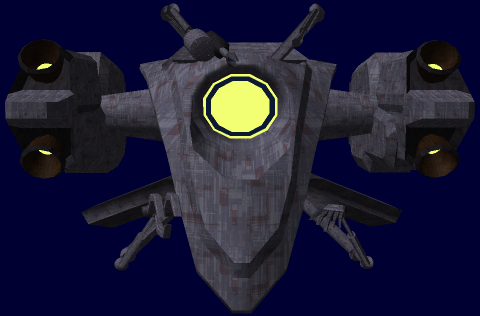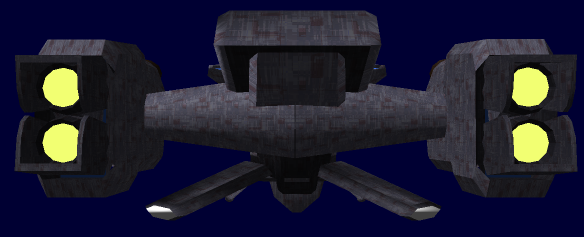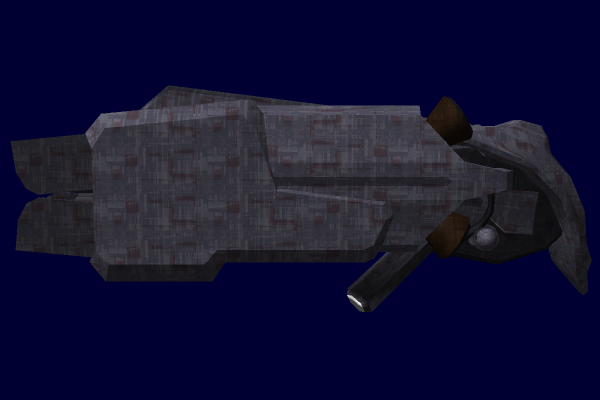Table of Contents
ASD1 Construction/Repair Drone
A relatively primitive design compared to the Mark I Construction Drone, the ASD1 is a reliable replacement in a compact form.
About the Ship
Designed to be an inexpensive replacement for the Mark I Construction Drone, the ASD1 uses reliable technology to do more work with less.
Key Features
The ASD1 has a smaller chassis, no armor, and a usage of Arcjets for propulsion.
Mission Specialization
The ASD1 is specialized in:
- Deep Space/Orbital Construction
- Starship Repair
Appearance
The ASD1 has a stubby, sloped head section with a large mono-eye visual sensor and four telescopic arms (two on top of the head and two on the sides). A long, flat rear section is used for storage of arm attachments and small materials. Underneath the flat section is a rotating joint with a series of three Arcjets attached to each side.
History and Background
Designed in YE 29, the Mark I Construction Drone was an awkward drone design when it was first rolled off the assembly lines. Large and fast, it had a difficult time working in shipyard environments due to its fusion engine. While good in Deep Space Operations, there were still quite a few accidents due to it's fusion engine melting projects.
Because of this, Kaiserlich F&E went back to the drawing board entirely. Designing the ASD1 in YE 33, the scientific team used old technology from the After Conflict Era and combined them with modern design philosophies and material sciences. Slower and smaller than it's predecessor, the ASD1 is believed to be a more cost-efficient and effective way to minimize orbital/deep space construction accidents as well as increase productivity. It is also safer to operate near active startships in need of repair.
Statistics and Performance
General
Class: ASD1 Type: Autonomous Drone Designers: Kaiserlich F&E Manufacturer: Abwehran Imperial Yards Production: Mass-produced1) Fielded by: Everyone; 31,000 Credits per unit (11,000 KS)
Passengers
Crew: 1x drone_vims
Dimensions
Length: 2 meters (~6.6 feet) Width: 1.6 meters (~5.2 feet) Height: 0.7 meters (~2.3 feet)
Propulsion and Range
Sublight Engines: 200 m/s (3 Gs) Range: 48 hours Lifespan: 2 Abwehran Years Refit Cycle: To be recycled after 2 Abwehran Years (8 Standard Years)
Damage Capacity
See Damage Rating (Version 3) for an explanation of the damage system.
- Hull: 5 Armor SP
Inside the Ship
Compartment Layouts
Maintenance Access Points
Small Access hatches located in 20 points to allow Mechanics access to all of the ASD1's vital systems. They are only large enough to reach into and cannot fit humanoids.
Ship Systems
Armored Hull and Hull Integrated Systems
The ASD1 does not have armor at all, but uses a standard civilian hull structure on top of a chassis of titanium trusses.
Computers and Electronics
The ASD1 runs its Drone Virtual Intelligence Model upon a CU-23.
Communication
- Radio, Civilian Small Craft
Detection
Construction/Repair Equipment
Anchors
A pair of struts protruding from the 'head' section hold a pair of anchors and 1 kilometer of woven, carbon-nanotube cables each. One anchor is a barbed dart used to pierce rock or soft debris to hold the ASD1 in place while the second type of anchor is a magnetic plate used for metallic objects.
Arms and Attachments
The ASD1 has four telescopic arms located around it's 'head' section. Each arm has the ability to fit a different type of tool and can extend to a full length of 2 meters beyond the drone's chassis.
Grappler attachment
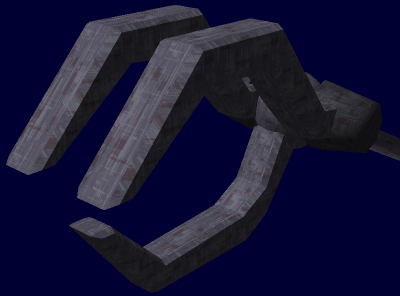 A tri-finger clamp attachment, the Grappler is used to physically grab debris or construction material.
A tri-finger clamp attachment, the Grappler is used to physically grab debris or construction material.
Laser Torch/Welder attachment
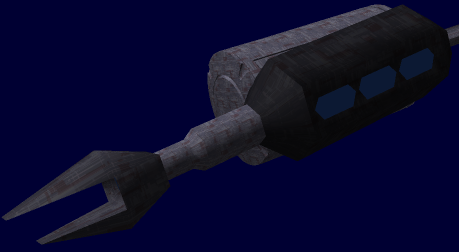 A simple free-elecron laser that is used to either wield material together or cut it apart. It can also be used in mining operations to cut off chunks of asteroids for transport to refinery vessels.
A simple free-elecron laser that is used to either wield material together or cut it apart. It can also be used in mining operations to cut off chunks of asteroids for transport to refinery vessels.
Manipulator attachment
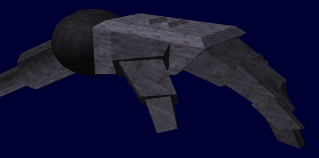 A five-finger attachment resembling a hand, the Manipulator is designed for more delicate work and is especially designed to minimize pressing in order to protect against crushing valuable building materials.
A five-finger attachment resembling a hand, the Manipulator is designed for more delicate work and is especially designed to minimize pressing in order to protect against crushing valuable building materials.
Power Systems
Many of the main systems use a pair of solar-charged batteries to power it's equipment and AI. However it does have a D-H3 Secondary Fusion Reactor to power it's sub-light engines.
Propulsion
The ASD1 is the first design to using 6 Arcjet motors to propel itself around a damaged vessel or a ship yard.
